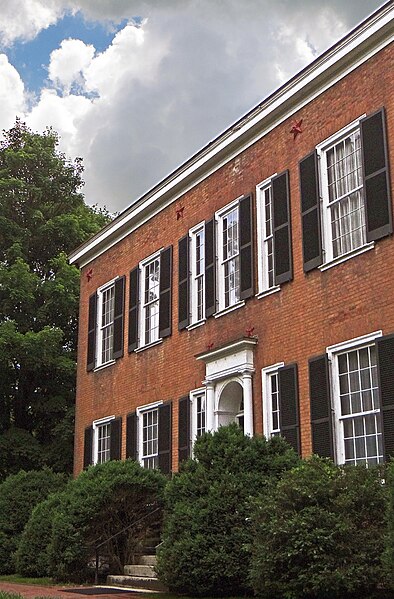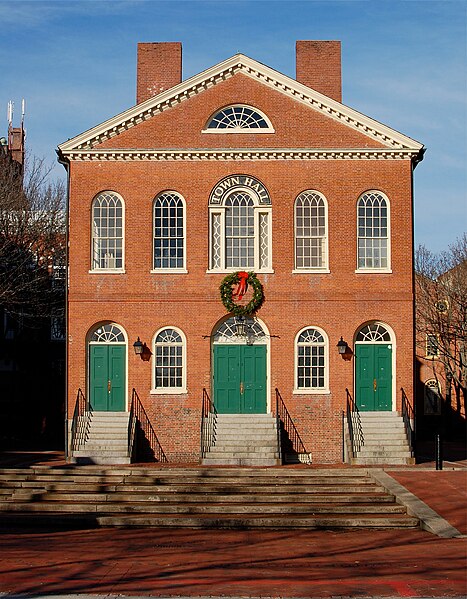Federal-style architecture is the name for the classical architecture built in the United States following the American Revolution between c. 1780 and 1830, and particularly from 1785 to 1815, which was influenced heavily by the works of Andrea Palladio with several innovations on Palladian architecture by Thomas Jefferson and his contemporaries. Jefferson's Monticello estate and several federal government buildings, including the White House, are among the most prominent examples of buildings constructed in Federal style.
Central Pavilion at Tontine Crescent in Boston, built in 1793–94
Elfreth's Alley in Philadelphia, featuring Colonial and Federal-style homes, is believed to be the nation's oldest residential street.
Federal Hill mansion, built in 1795, at My Old Kentucky Home State Park in Bardstown, Kentucky
Old Town Hall in Salem, Massachusetts, built in 1816–17
Regency architecture encompasses classical buildings built in the United Kingdom during the Regency era in the early 19th century when George IV was Prince Regent, and also to earlier and later buildings following the same style. The period coincides with the Biedermeier style in the German-speaking lands, Federal style in the United States and the French Empire style. Regency style is also applied to interior design and decorative arts of the period, typified by elegant furniture and vertically striped wallpaper, and to styles of clothing; for men, as typified by the dandy Beau Brummell and for women the Empire silhouette.
Cumberland Terrace, London, John Nash
The original Piccadilly entrance to the Burlington Arcade, 1819
John Nash's All Souls Church, Langham Place, London
John Nash's Clarence House.








